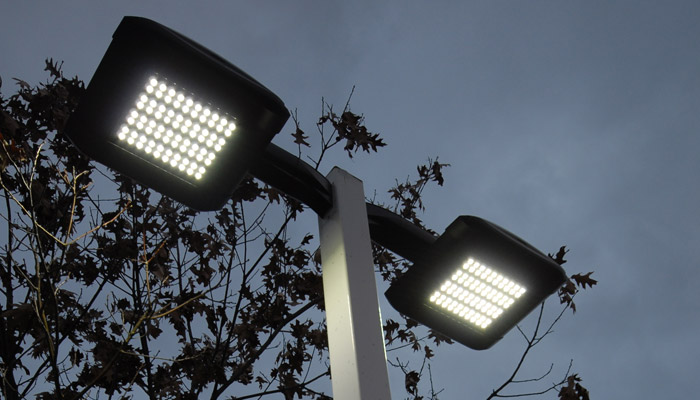LEDs: The New Normal

EXTERIOR LEDS
In February 2015, an LED Street Light replacement project was completed in the City of Fayetteville’s Entertainment District. The project replaced 70 high-pressure sodium 170 watt fixtures with new 60 watt light emitting diode (LED) fixtures. These fixtures provide more light output at a reduced energy cost.
The local utility AEPSouthwestern Electric Power Co. provided an incentive to the City in the amount of $4,967.83 for the replacement of the existing fixtures. Total project cost was $13,728 ($8,760 after the utility incentive). The estimated electricity savings associated with the new lighting will be $3,725 per year with a 3.5 to 4.0 year project payback.
INTERIOR LEDS
In January of 2015, the City of Fayetteville replaced the lights in their Recycling and Trash Center. The project facility consisted of 2 large bays with a total of 33 lights. The previously existing 400 watt metal halide lights were replaced with 107 watt LED lights and 12 of the 33 lighting fixtures have daylight harvesting sensors allowing for extra efficiency and savings. AEPSouthwestern Electric Power Co. provided an incentive to the City in the amount of $6,892.97 to replace the existing fixtures. The total project cost was $8,158.63 (including the $6,892.97 incentive). The estimated electricity savings associated with the new lighting will be $4,560 per year with a 1.8 year project payback.
EASE OF REPLICATION: CREATING THE NEW NORMAL
It’s easy to read a success like this and think: “but my utility would never rebate”, “my city won’t go for a performance contract”, or “I have no initial capital to start a municipal energy fund”. However, some key takeaways can apply anywhere, regardless of individual circumstance:
- Collect data. Take the time to do some research on the USDN site and the internet to see what cities most like you in size and political climate have had in terms of lighting retrofit success. Take the energy costs savings of your closest retrofitting neighbor to your manager and show how replicating can save money and time.
- Borrow. Many SSDN members have been down this path. Borrow Performance Contracting RFPs, contract templates, and utility agreements. Show them to your administration, legal council, and utilities. Explain that retrofitting to save energy and costs is a standard best practice.
- Start small. Pilot liberally to reduce risk. Starting in one building – or on one city street – can reduce the fear of enormous investment. Showing the lack of maintenance and reduced costs can help you build up to a district.
- Give back. Someone in your network will follow in your shoes. Make it easy for them to step in all the solid places you’ve stepped, and avoid the potholes.
- Go after low hanging fruit. Go after buildings with high utility bills and long operating hours to get the fastest payback for the project.